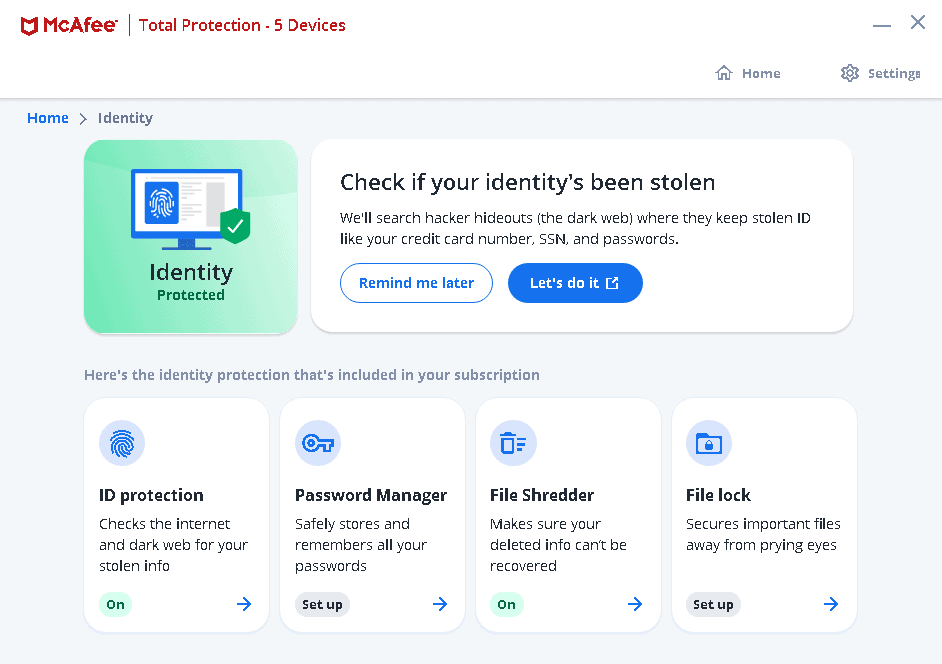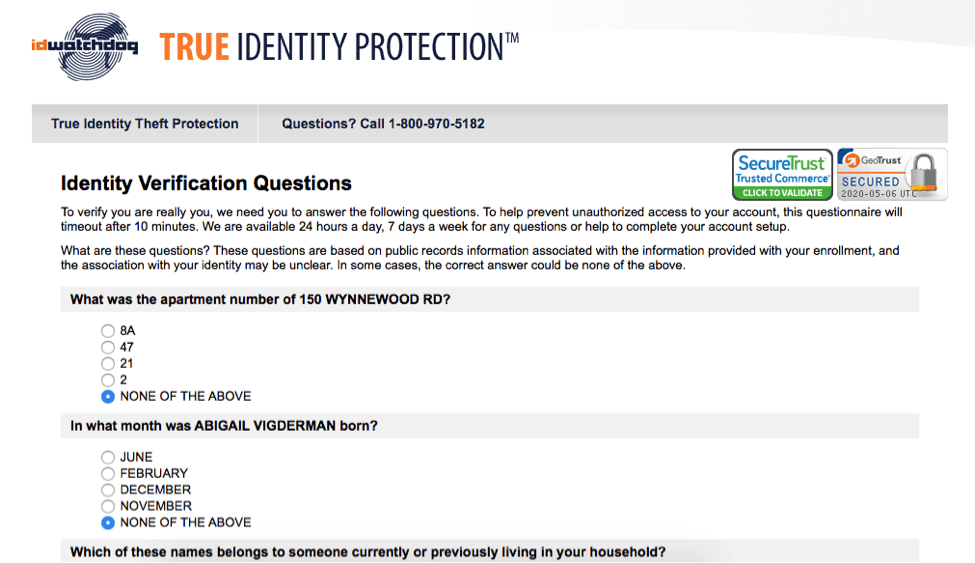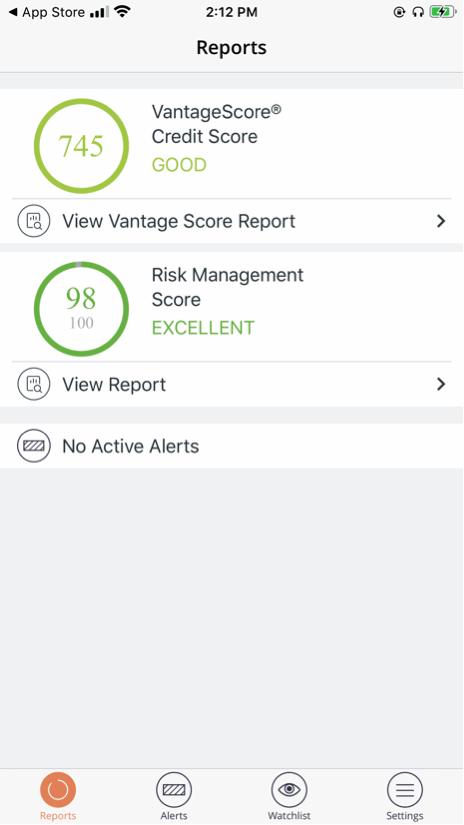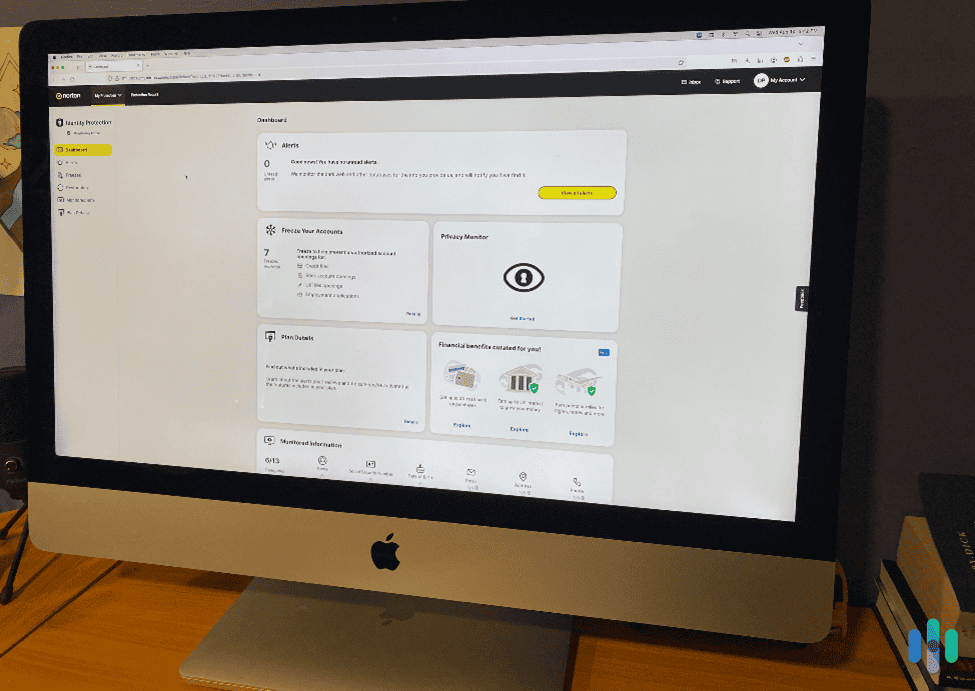If you’ve done any amount of reading about the dark web, you’ve probably seen that iceberg illustration about the World Wide Web. The tip of the iceberg floating above the surface is the portion of the internet we can access through normal means — i.e. browsers and search engines. The larger portion underwater is the deep web. And at the very bottom, there’s the dark web.
What is the dark web, exactly? There are a lot of misconceptions about it, but we’ll answer that question once and for all in this guide. We’ll also discuss why it’s dangerous and why you should inform yourself about the dark web even if you don’t plan to be on it.
>> Related: The Best Identity Protection Services With Dark Web Monitoring
Dark Web vs. Deep Web vs. Surface Web
The dark web — sometimes called darknet — is a small portion of the internet that is hidden and can be accessed only by using specific software, configurations, or authorization.
To better understand what that means, let’s define and contrast the three sections of the World Wide Web: surface web, deep web, and dark web.
- Surface web: The surface web (aka the clear web or clearnet) is the section that has been indexed by search engines such as Google. If you search “penguins,” for example, Google will look for pages on the surface web related to penguins and show you the results.
- Deep web: The deep web is a blanket term for any page that has not been indexed by web crawlers and search engines. About 90 percent of the internet is part of the deep web.1 What many don’t know is that even your email inbox is on the deep web. That’s why even if you’ve been sharing penguin pictures with your officemates via email, your conversations don’t appear when you do a standard search engine query for penguins.
- Dark web: The dark web is also on the deep web, but you’d need more than just login credentials to access it. You’d need purpose-built software and the right network configuration to visit pages on the dark web. In short, you can’t access the dark web with a regular browser like Chrome, Firefox, or Edge. That’s because multiple layers of encryption and firewalls prevent dark web pages from being discovered.
The key takeaway is that the dark web is part of the deep web, but they’re not interchangeable. You can access most of the deep web using a normal browser. You just need the right authorization. As for the dark web, it’s intentionally hidden, encrypted, and made anonymous. As you can probably imagine, that’s exactly what threat actors on the internet want to hide their nefarious deeds.
Is All of the Dark Web Bad?
We’ll be diving into some of the seedier aspects of the dark web, but it’s important to emphasize that many dark web websites are legitimate and useful resources. Part of the spirit of the dark web is driven by open access, privacy, and democratization. It was, in the first place, created for:
- Journalists, activists, and whistleblowers, especially in regions with strict censorship laws
- Government or military agencies
- Cybersecurity researchers
- Organizations advocating for democracy and online freedom
That’s why the dark web is not illegal, but content and information shared there can be. Here’s a list of some of the illegal and dangerous items that can be found and activities that happen on the dark web:
- The buying and selling of credit card numbers
- The trading of personally identifiable information (PII), such as names and Social Security Numbers gathered from data breaches
- All kinds of drugs and weapons
- Counterfeit money
- The buying and selling of login credentials from email and online bank accounts
- Pornography
- Assassins and hackers for hire
A range of underground marketplaces populate the dark web. In 2021, some of the most popular marketplaces included Dark0de, Torrez, and OpenRoad. Dark0de alone had over 69,000 listings, while Torrez offered around 57,000.2 By far the most infamous dark web marketplace is the Silk Road. Let’s take a closer look at it to see just how dark the dark web can be.
The Silk Road
One of the biggest news stories about the dark web involves Ross Ulbricht, aka Dread Pirate Roberts, and a dark web site he created called the Silk Road — a reference to the network of trade routes that connected Asia and Europe for 1,500 years.
Ulbricht, a physics and engineering graduate, envisioned a website “where people could buy anything anonymously, with no trail whatsoever that could lead back to them,” he allegedly wrote, according to the U.S. Department of Justice.3 The site became a hotbed for a range of unlawful goods and services, including illegal drugs and guns for hire. According to the DOJ, the goods and services involved more than 100,000 buyers and were used to launder hundreds of millions of dollars.4
Fortunately, the Silk Road didn’t last long. It launched in 2011, and it was shut down in 2013 when Ulbricht was arrested. A few days later, administrators from the shuttered website launched Silk Road 2.0, but it didn’t last long either. It was shut down in 2014.

How to Access the Dark Web
Here’s a riddle for you: If we cannot access the dark web using normal search engines or by typing a website address into a standard browser, how exactly do we get on the dark web?
The answer, of course, is by using dark web browsers like the open-source platform Tor. The Tor Project is a nonprofit that says it aims to “advance human rights and defend your privacy online through free software and open networks.” The browser provides anonymity and the right network configuration to access hidden dark web pages.
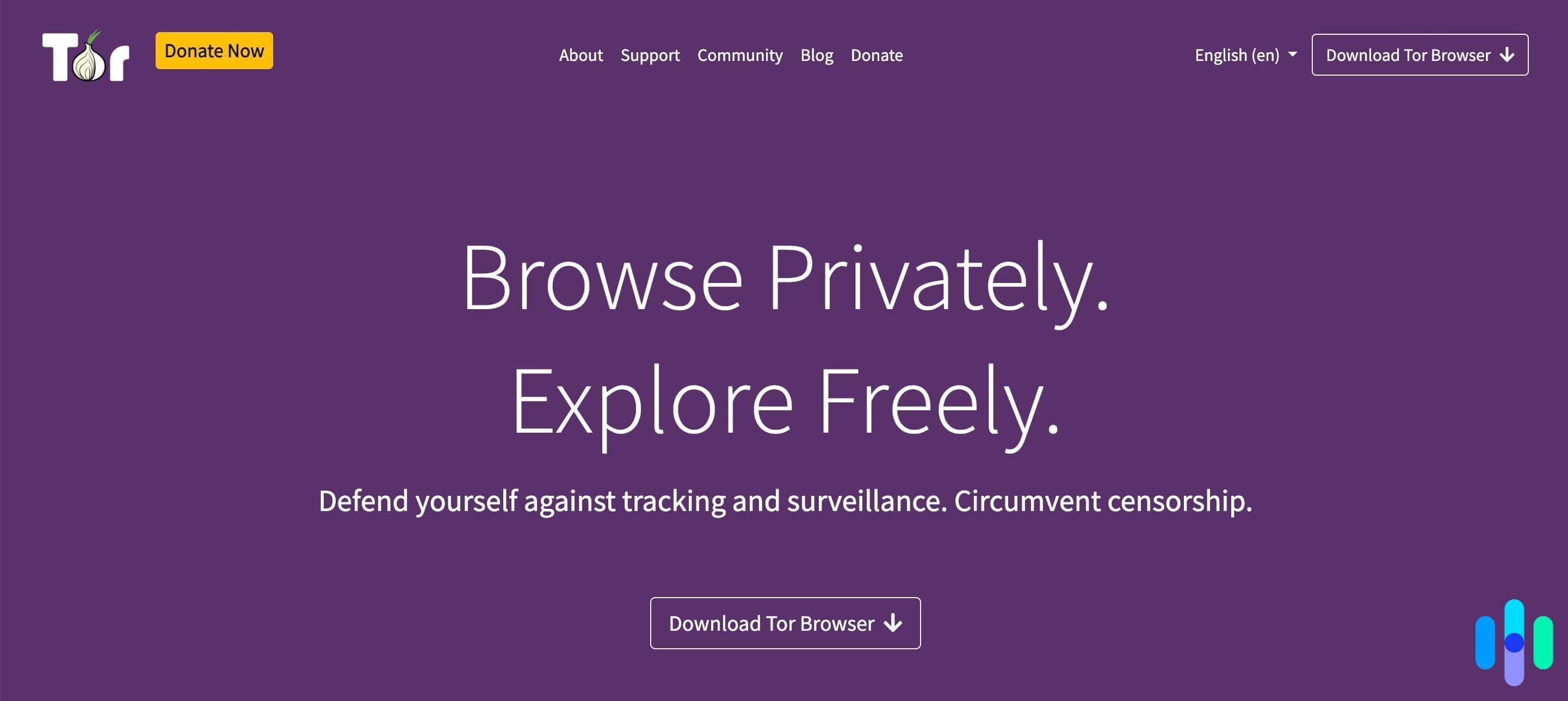
As we all know, websites on the surface web end with common suffixes such as .com, .org, .edu, and .gov. When browsing through Tor on the dark web, however, the suffix is .onion. That’s right, onion. It’s fitting because Tor itself stands for The Onion Router, a reference to the multilayered (like an onion’s skin) encryption it uses to keep users anonymous.
FYI: The Tor browser routes traffic similarly to VPNs. It first encrypts your traffic and then routes it through several relays (or nodes), adding a layer of encryption every time. At least three nodes are required to create a Tor connection.
Through Tor, users can access a number of dark web websites, including mirrored versions of surface web sites such as Facebook and The New York Times. For those who really want to explore the dark web, several pages called the Hidden Wiki serve as a directory of links to other .onion sites.
Before you go exploring the dark web, it’s crucial to recognize that it is much more dangerous than the surface web — and not just because of all the illegal activity happening on the dark web. Even if you’re a law-abiding citizen only looking to see what’s in the dark, hidden alleys of the internet, there are many dangers that can befall you.
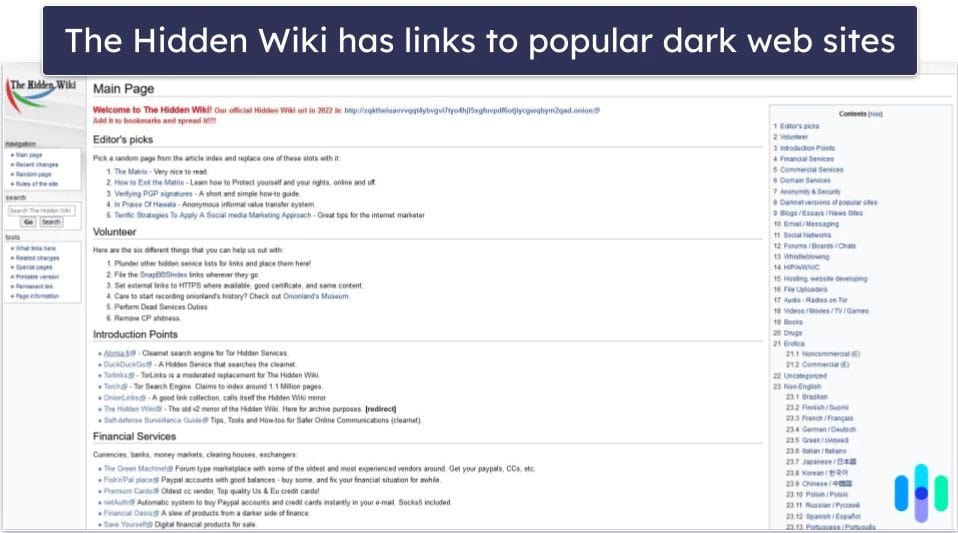
Dangers of the Dark Web
To be clear, we’ll be discussing the digital dangers of going to the dark web. There are physical dangers too. If you make the mistake of exposing your location, for example, you could get on the radar of people on the dark web who commit heinous crimes, like human trafficking. But let’s focus on the cybersecurity risks.
Malware
Let’s start with malware. The dark web is unregulated. You know how your browser warns you if you try to visit a website or download a file that’s potentially dangerous? There are no such protections on the dark web, so it’s easier for threat actors to infect devices with malware, including:
- Keyloggers: A type of spyware that compromises your personal digital security by recording keystrokes that can be used to access your account passwords.
- Ransomware: A type of malware that involves the extortion of a user’s data or information in exchange for money.
- Botnet: Another type of malware that takes control of certain aspects of a device for use in more large-scale attacks like DDoS.
- Remote access trojan (RAT): A type of trojan virus that enters your device through infected software and then gives the attacker a remote backdoor to your device.
- Spyware: A type of malicious software that gives hackers access to your device and device peripherals, such as webcams and keyboards, to spy on you.
As for how threat actors spread malware, they can use a variety of techniques. Malicious links are the most common. Dark web URLs are often made of a random and long alphanumeric string, which makes them harder to verify than surface web URLs. For example, here’s the URL of Facebook’s dark web mirrored site: facebookwkhpilnemxj7asaniu7vnjjbiltxjqhye3mhbshg7kx5tfyd.onion
Would you be able to tell if a cybercriminal changed one character to send you to a malware-infested copycat site? Neither would we.
Scams
In the same vein, online scams are much more prevalent on the dark web than on the surface web. One key reason is the anonymity the dark web provides. Scammers are bolder and much more daring because they know they’re untraceable. Add to that the fact that Bitcoin is the preferred currency on the dark web. If you think eBay transactions aren’t safe, dark web transactions are far worse.
Dark web scams don’t only involve money though. Phishing scams are also everywhere. Phishing is when someone contacts you pretending to be someone else to gain access to your personal information, which often results in identity theft.
One we’ve encountered is a scammer pretending to be the admin of an exclusive forum we tried to sign up for. They asked for our personal information in exchange for access to the forum. We didn’t give them any information, but it’s scary to think how legitimate they sounded in the email.
Protecting Yourself on the Dark Web
Despite all the dangers, there are actually advantages to using the dark web. It’s a way to access a more open internet since the dark web is decentralized. You’d also enjoy anonymity and privacy thanks to Tor’s encryption and routing, something you don’t get from most normal browsers. But, of course, exercise caution and stay away from anything illegal.
We put together a list of best practices you can use when exploring the dark web.
- Don’t disclose personal information. That should go without saying. Disclosing personal information anywhere online — even the surface web — is ill-advised, and even more so on the dark web, which is where cybercriminals like to hang.
- Use Tor’s recommended settings. One of the first things you’ll notice when you go on the dark web is that websites load more slowly. That’s because of how Tor handles traffic. It’s tempting to change the default settings to make pages load faster, but stick with Tor’s recommended settings. Even a simple change, such as maximizing the browser window, could compromise your anonymity.
- Stay away from illegal websites. Obviously, you shouldn’t visit websites made for illegal and illicit activities. Aside from potentially landing you in hot legal water, those websites are also where cybercriminals hunt their victims. The logic is that if you’re on an illegal website, you’d be unlikely to take legal action or report it to the police if you fall victim.
- Use antivirus software. We can’t overstate the importance of having good antivirus software while exploring the dark web. Malware is one of the biggest dark web dangers. Going to the dark web using a device without antivirus software is like walking across a battlefield wearing only a pair of shorts and a T-shirt.
- Use a VPN. Tor keeps users anonymous, but it doesn’t offer security and privacy like VPNs do. That’s why you should still use a VPN if you’re visiting the dark web.
FYI: Because of how the Tor browser routes traffic and accesses the Tor anonymity network, not all VPNs work with it. Look for VPNs that offer a Tor Over VPN or Onion Over VPN feature, like NordVPN. See our NordVPN review for more information.
Remove Your Information from the Internet
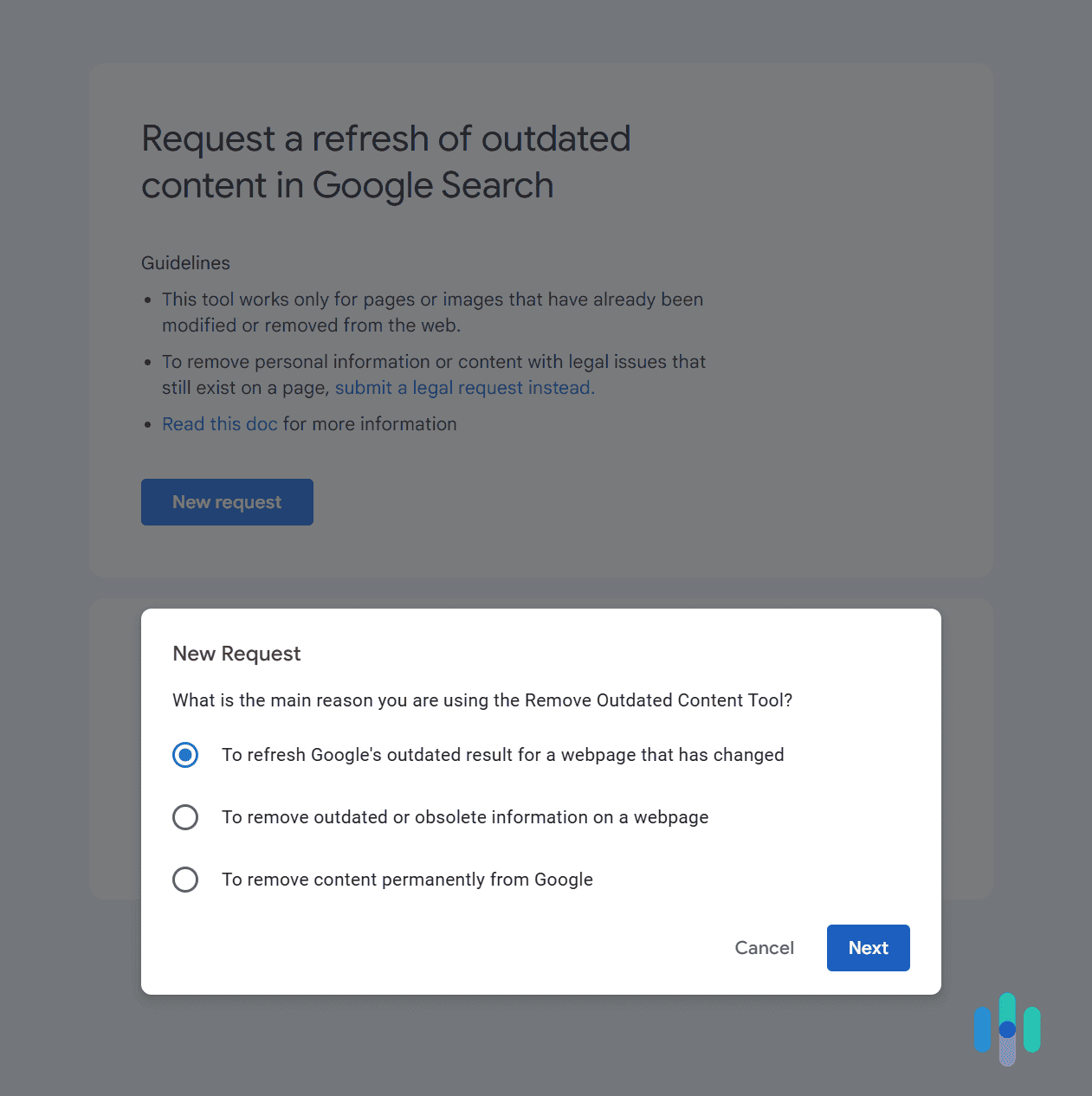
- Delete Personal Information from Google October 28, 2024
- How to Remove Your Address February 19, 2025
- How to Remove Your Phone Number September 9, 2024
- How to Remove Your Name December 5, 2024
- How to Remove House Photos February 5, 2025
- How to Remove Mugshots February 5, 2025
Wrapping Up
The dark web isn’t entirely bad, but it’s clear that it can be deeply dangerous. It’s a hotbed of crime — both physical and digital — and anyone who dares enter it would be exposing themselves to those dangers. That’s why, as cybersecurity experts and safety advocates, we don’t recommend accessing the dark web.
>> Related Reading: Best Password Managers
If your work or lifestyle requires you to use the dark web, however, there are ways to protect yourself. Just as you need the right tools to access the dark web, you also need the right protections to be able to stay safe on it. Start with our guide to digital security and online safety.
Dark Web FAQs
Before we part ways, here are some of the most frequent questions we get about the dark web.
-
What is the dark web?
The dark web is part of the larger deep web, which makes up about 90 percent of the internet. Not all dark web websites are nefarious, but the dark web is also used for a number of illegal activities, from drug dealing to child pornography.
-
What can I do to stay safe?
The dark web can be accessed by a secure browser called Tor. Beyond that, make sure you are using a secure VPN, have robust antivirus software, and are using a firewall.
-
When was the dark web started?
The dark web started in 2000 with the release of Freenet, the thesis project of Ian Clarke, a student at the University of Edinburgh.
-
Why would I use the dark web?
The dark web uses complex systems that anonymize users’ true IP addresses, which is useful for journalists and activists who live in countries with strict censorship laws.
-
Who is Ross Ulbricht?
Ross Ulbricht is the founder of Silk Road, which was a haven for a range of unlawful goods and services. It was shut down by the FBI in 2013, and Ulbricht is serving life in prison.



